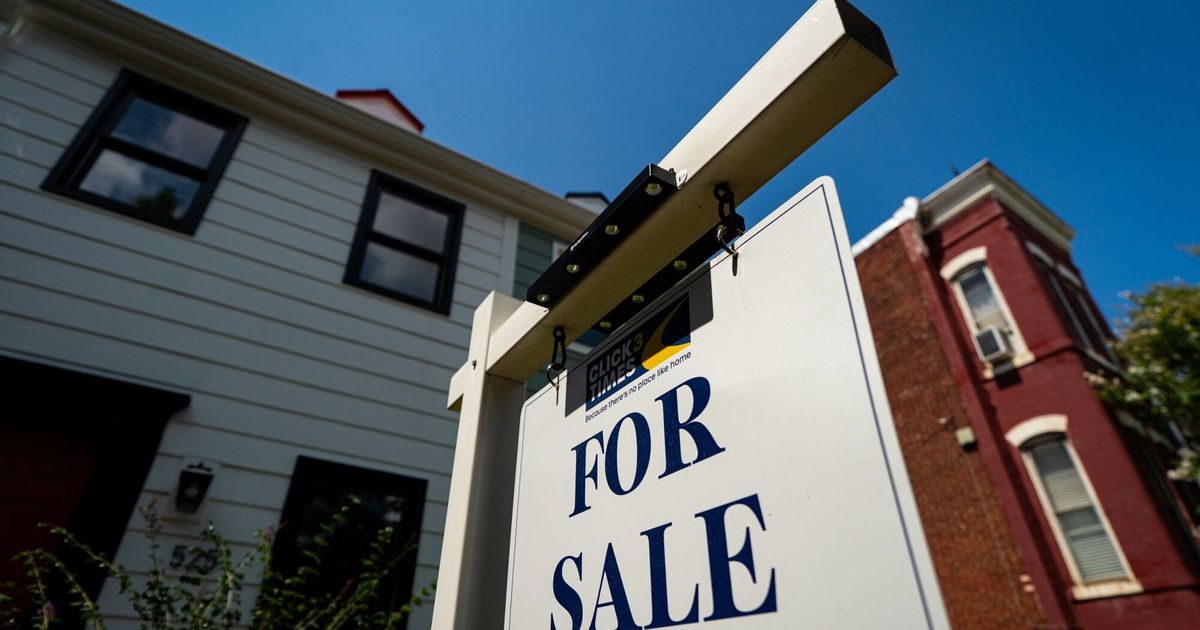News of a poll showing that a supermajority of Washingtonians say building more housing won’t reduce prices shouldn’t come as a surprise.
My colleague Heidi Groover detailed how the survey by Portland’s DHM Research of Washington voters showed 65% of respondents said housing costs would continue to increase even with new construction. It was a small survey batch — 500 — but still carried weight.
It raised the question of whether Seattle, the Puget Sound region or much of Western Washington could ever be made “affordable.”
This appears to be a sharp contrast to the decades when Seattle was a working-class and middle-class city, with Boeing, canneries, manufacturing, railroads and more abundant jobs in the maritime sector and the port.
Now the economy is centered on technology and other sectors that demand high-end skills. This has helped drive up prices.
For example, a house purchased for $32,000 in Magnolia in 1965 would be worth around $320,000 in today’s purchasing power, according to the handy federal Bureau of Labor Statistics inflation calculator. Single-family detached houses in the neighborhood are now priced in the millions.
Housing construction is slow. In Washington, housing permits totaled 2,852 as of February, according to the Census Bureau. That compares with nearly 4,700 in the same month in 2023. In King County, more than 200 similar permits were issued in February. That’s down compared with about 274 in the same month of 2023.
Still, around 64% of the state’s population was classified as owner-occupied housing, according to the Census Bureau. In King County, the rate was 61.5%, down from 65% in 2009.
Ranking the most expensive housing markets depends on who’s doing the assessment. According to U.S. News & World Report, the “most expensive cities” in America as of the past year were San Diego, Los Angeles, Honolulu, Miami and Santa Barbara, Calif. Seattle ranked No. 13.
The U.S. News list is based on several factors, including housing affordability.
RealtyHop, a New York City firm that assists investors and buyers, ranked the affordability of homeownership by contrasting median home prices against household income, property taxes and mortgage expenses. By this measure, Miami; Los Angeles; New York City; Newark, N.J.; and the Miami suburb of Hialeah were the most expensive (as originally reported in The New York Times).
A Zillow analysis found that the typical person or family seeking to purchase a house in the Seattle area needed to make $214,000 a year, the fifth-highest income required and the highest outside California. That comes to $47,000 more than in 2020.
Even Phoenix, a metropolitan area that lives and swoons by real estate, is facing a shortage of affordable housing (although I blame much of this on Phoenix’s low-wage economy).
It’s much less expensive in places such as Green Bay, Wis.; Wichita, Kan.; Detroit; and Huntsville, Ala.
Buying a house has been made more difficult by multiple events, such as the Great Recession, the slow recovery in most places in the 2010s as Seattle ascended to “superstar” ranks, the effects of the pandemic, inflation and high interest rates.
The settlement of lawsuits against the National Association of Realtors could alter the market and the way buyers, sellers and real estate agents work.
Nationally members of Gen X, the cohort born between 1965 and 1980, are deciding the best places to buy a retirement home. Many are in their peak earning years and amassing far more wealth and home equity than millennials.
“They have more market power than younger buyers,” Jennifer Molinsky, director of the Housing an Aging Society Program at the Harvard Joint Center for Housing Studies, told The New York Times. “They have a lot of wealth and are ready to make changes.”
Whether they can afford Seattle and its surrounding cities is uncertain. Meanwhile, many millennials will lack the financial advantages of baby boomers and Generation X.
Housing affordability is a priority for Seattle Mayor Bruce Harrell. He hopes to increase housing production in the city, invest in affordable housing and implement policies to keep “vulnerable households in place and cultural communities intact.”
Getting this through the City Council and the “Seattle process” will be another, more challenging matter. Some critics worry about the effect of Harrell’s plan on existing neighborhoods. Others fear it doesn’t do enough to provide housing for a growing city.
It might go the way of the Mandatory Housing Affordability “grand bargain” of 2015 among developers, activists and politicians. As my colleague Daniel Beekman reported, the results were mixed.
In Boston, Mayor Michelle Wu is pushing for higher-density housing construction (especially around transit hubs), cutting red tape and imposing rent control, while preserving and converting existing buildings for housing. Not surprisingly, this has run into opposition from some real estate interests and even pro-housing activists.
Los Angeles is taking advantage of a series of California laws allowing for more accessory dwelling units — small units located on the same lots as stand-alone residences. Will it aid in L.A.’s housing shortage?
The Washington Legislature’s plan to address housing this session was a disappointment. For example, a measure would have allowed property owners to divide residential lots as long as the resulting land was 2,000 square feet or larger. This would have increased the opportunities for homeowners in places that prohibit the minimum size of lots. (This was reported at length in the Urbanist blog.)
When I travel around Central Seattle and see all the empty storefronts, the closed retailers, the blight and depressing condition of the streets, I wonder if we’ll ever be a superstar again.
Even if we don’t don that cape, don’t expect Seattle to be affordable. It’s a local and national challenge, and nobody yet has the magic elixir to resolve it.
















